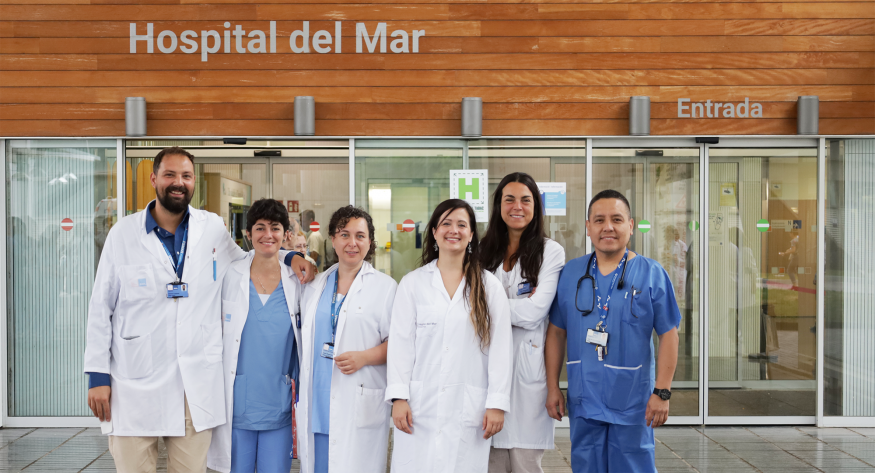Emergency Surgery
The Emergency Surgery Service provides comprehensive care from the moment patients arrive at the emergency department, ensuring a swift and efficient response to various serious medical conditions. Our dedication and expertise are demonstrated by the performance of 274 surgeries annually, ensuring high-quality and efficient medical care.

Profesional Team
Coordinator
Estela Membrilla-Fernández
Associate Surgeons
Ana María González-Castillo, Amalia Pelegrina-Manzano, Simone Cremona, Elena Manzo, Alberto Picazo García
Medical-Surgical Assistants
Juan Guzmán Ahumada
Operating Room Nursing Team
Miriam Redondo Grande, Pablo José Ruiz Hipólito, Rosendo Sánchez Suárez
Anesthesia Team
Juan Carlos Álvarez García
Service Portfolio
- Attention from the moment of arrival at the emergency department for every patient with abdominal pain without diarrhea.
- Attention from the moment of arrival at the emergency department for every polytraumatized patient:
- Priorities 0 and 1 (Alongside Intensive Care Medicine, acting as Intensive Care Medicine's leader)
- Priorities 2 and 3 (Exclusively General Surgery as the leader)
- Care for patients with contusions and/or incised wounds on the trunk and head, including pediatric incised wounds.
- Care for patients with cranioencephalic trauma less than 24 hours old.
- Attention from the outset upon arrival at the emergency department for patients with proctologic pathology.
- Assessment of patient severity upon arrival and therefore prioritization of their visit.
- Early detection of complications in patients in immediate postoperative care.
- Diagnosis through "point of care" of abdominal pain.
- Diagnosis and conservative treatment of acute diverticulitis.
- Diagnosis and conservative treatment of subocclusions and intestinal obstructions.
- Initial care for patients in Otolaryngology, Maxillofacial Surgery, Plastic Surgery, and Thoracic Surgery specialties.
- Placement of chest drains and central lines.
- Detection and coordination of definitive treatment for soft tissue infections.
- Early detection of patients at risk of intestinal ischemia and activation and coordination of rapid response team.
- Emergency definitive airway management in extreme situations.
- Emergency thoracotomy in extreme situations.
- Responsibility as a Unit for patients admitted to the General Surgery Conventional Unit post-appendectomy, soft tissue infections, and closed open abdomen, admitted as polytraumatized with or without surgery performed, and for all patients awaiting urgent surgery.
- Resuscitation care for patients with intervened soft tissue infections, open abdomen, and any urgent consultation occurring from 08:00 to 15:00.
- Direct discharges from ZARPA of patients operated on for appendectomy, cholecystectomy, and scheduled hernioplasties, operated on by the Emergency team.
- Handling urgent consultations from other service patients.
- Emergency surgical interventions, 274 surgeries performed annually between 08:00 and 15:00.
- Acute appendicitis: Laparoscopic appendectomy and McBurney's approach.
- Acute cholecystitis: Laparoscopic cholecystectomy and right subcostal approach.
- Meckel's diverticulum (Laparoscopic resection).
- Exploratory laparoscopy.
- Emergency laparotomy for closed trauma: Packing, emergency splenectomy.
- Laparoscopic closure of the diaphragm in polytraumatized patients.
- Open abdomen, urgent hernia pathology (non-reducible) with intestinal resection and without intestinal resection.
- Perforated ulcer, laparoscopic closure.
- Surgical treatment of intestinal obstructions due to adhesions.
- Surgical treatment of intestinal obstructions due to neoplasia.
- Colectomies.
- Surgical debridement of severe soft tissue infections.
Highlighted Activities
- Surgical Approach in Trauma Patients
- Surgical Approach in Critically Ill Surgical Patients
- National Coordination and Continuous Updates in Open Abdomen Techniques
- Application of Negative Pressure Therapies with New Indications and Improvements
- Weekly Literature Update Sessions
- Maintenance of Bibliographic Activity within the Team
- Implementation of Clinical Simulation Foundations and Knowledge
- Performing Ultrasound for Emergency Patients as Needed
Research
Research Involvement of the Emergency Team
- Multiple participations in national and international conferences. 21 oral presentations this year.
- Analysis of the registry of emergency patients treated, emergency surgeries performed, and reoperations by the General Surgery Service, focusing on complications necessitating readmission, reoperation, or serious complications.
- Participation in various national and international multicenter registries.
- Leadership in several multicenter studies.
- Publications: 35 in the last 5 years.


